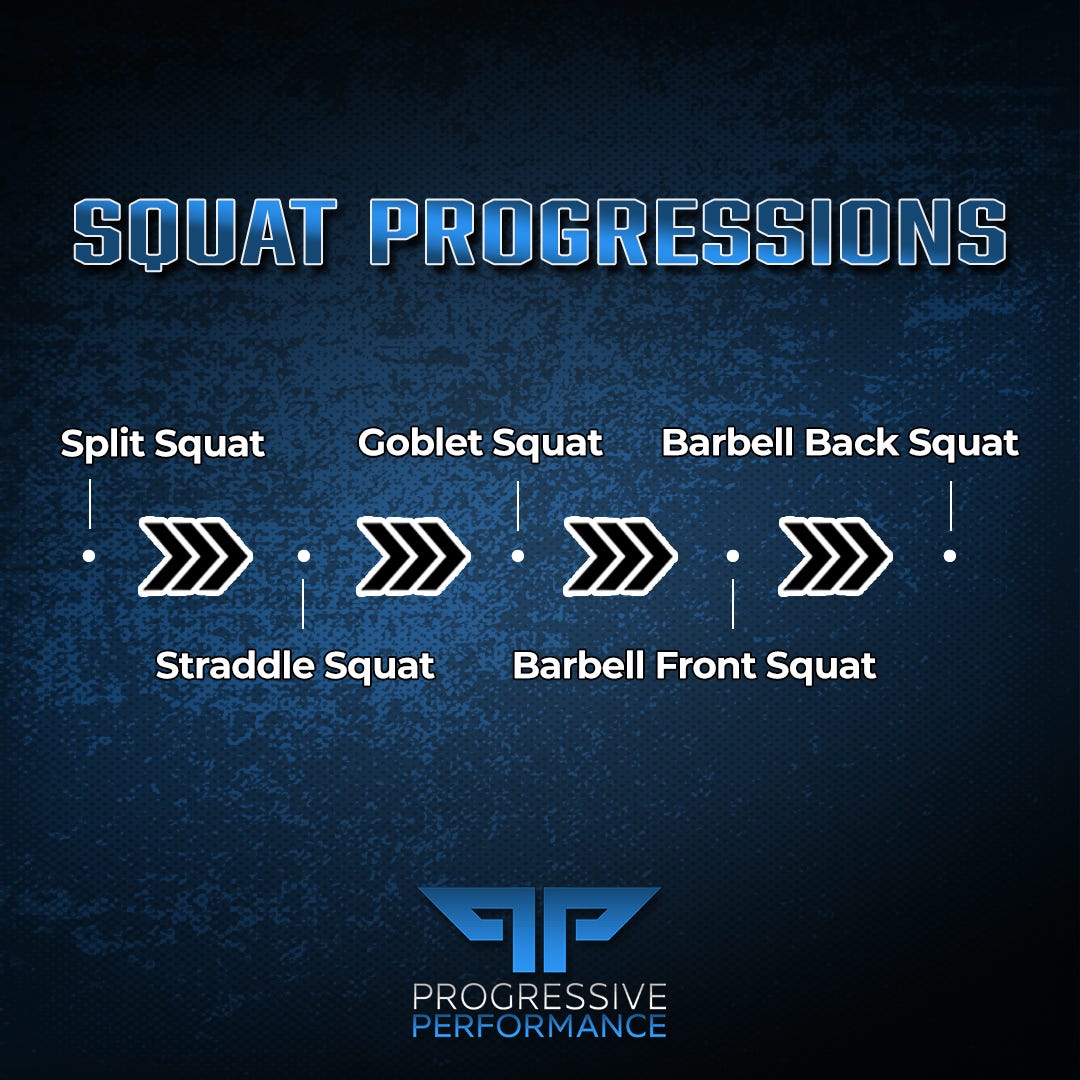
For many, squats are considered to be the most primitive movement pattern. Even before we’re able to take our first steps, our bodies are hardwired to squat.
But the ability to perform (and load) this movement safely and effectively is dependent on a substantial number of prerequisites — prerequisites that depend on your understanding of squat-pattern progressions and regressions. Whether it’s injury, mobility or even strength that is the limiting factor, it’s vital to recognize your current proficiency and how to navigate the spectrum accordingly.
Split Squat
Split Squats are the lowest level of this pattern. The barriers-to-entry are minimal, and any limiting factors (i.e. strength, mobility, etc) are easily overcome.
Straddle Squat
The loading placement (between legs) naturally shifts bias to the glutes/hips as the primary movers. Less demand is placed on ankle, knee and thoracic mobility. Straddle Squats are easily teachable and require minimal skill to learn.
Goblet Squat
The pattern mirrors the Straddle Squat — But the shift in loading position (from between the legs to chest-height) means Goblets have higher mobility and strength prerequisites, specifically that of the upper back and quads.
Barbell Front Squat
Generally thought of as one of the more systemically challenging (and miserable) exercises, the Front Squat is a litmus test for assessing overall mobility, strength, and coordination. One big advantage is the inherent safety; “failing” a Front Squat doesn’t come with the same significant risk of injury that might be present with other progressed squat variations.
Barbell Back Squat
A technically perfect Back Squat demands synchronization from ankles to neck — engaging every component of the musculoskeletal system in between. Most trainees will require years of work before graduating to Back Squats; and some never will. As compared to the Front Squat, these place much more emphasis on shoulder mobility, low back/hip strength, and technical resiliency when approaching failure.
The beauty of the Squat Pattern lies in its versatility — there are many modifications and work-arounds that we have at our disposal to make this pattern work for us, no matter the limitations or goals.
Specialty bars can circumvent mobility restrictions.
Belt squats can remove the axial loading.
Pendulum squats can allow safer training close to failure without worry of technique breakdown.
There are a thousand possible variants on this continuum, and a million more ways we can modify each — to progress OR regress — based on our individual needs.
Identify where the simplest limitations lie → Regress down to that point → Address it → Then progress based on overarching goals.
